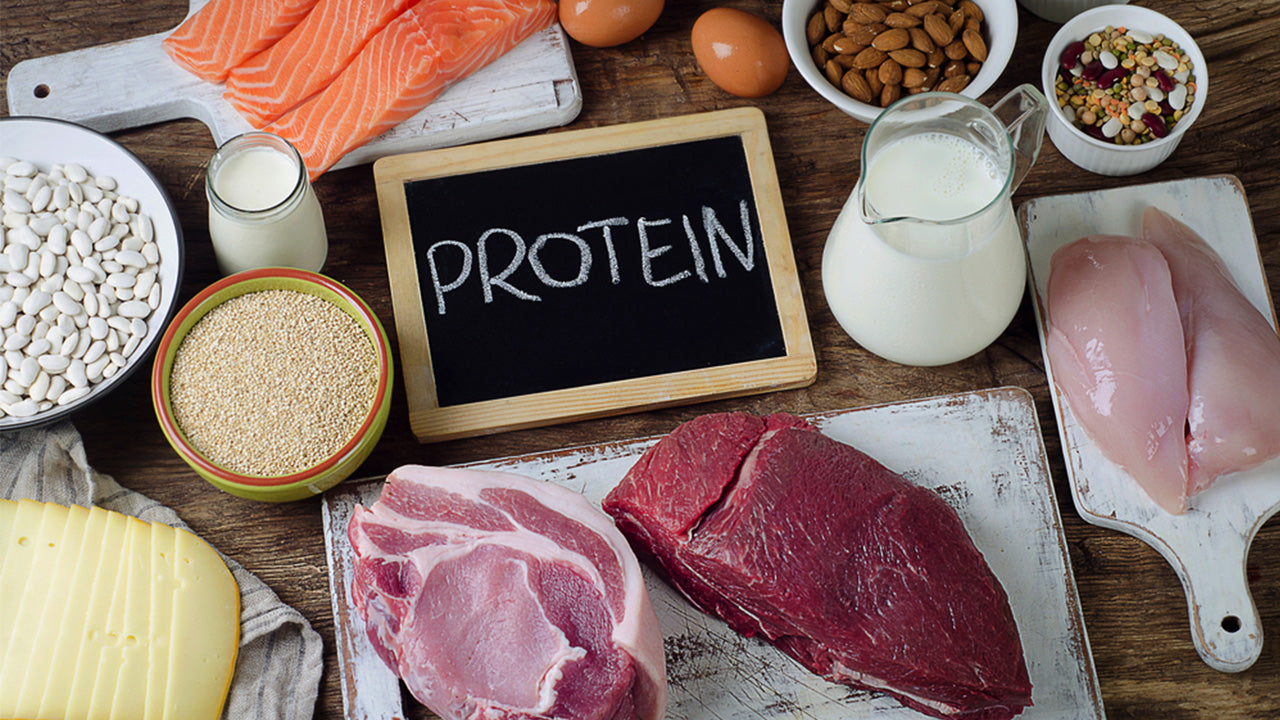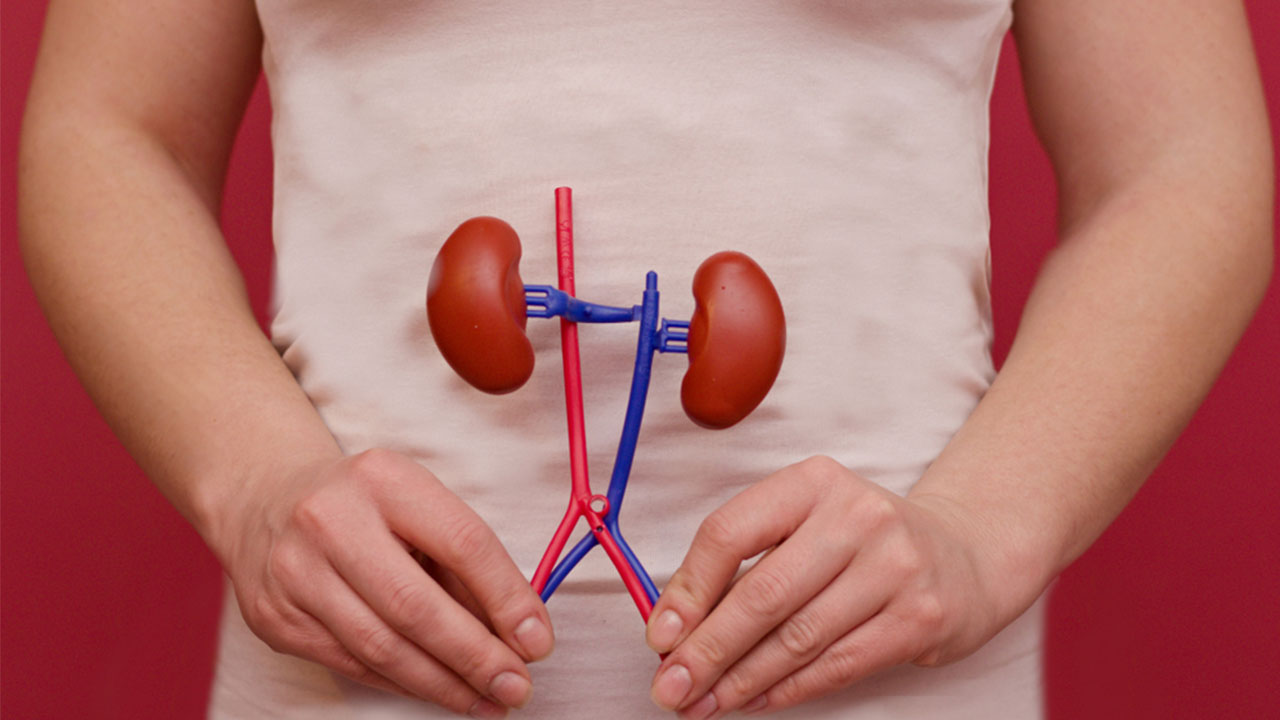20 Top Ways to Add More Protein to Your Day—Morning, Noon and Night
 By: by Amino Science
By: by Amino Science

The list of reasons to consciously increase your protein intake just keeps getting longer. Research shows that a high protein intake can increase muscle mass, support healthy weight loss, and improve your overall health.
Increasing your protein intake can help with muscle growth, as well as making you measurably stronger. Protein also helps you build lean muscle and can counteract age-related muscle loss.
Eating protein spurs your gut to produce PYY, a hormone that keeps you feeling full and satisfied. It also tells your body to release less ghrelin, the “hunger hormone.” And it boosts your metabolic rate, even while you’re sleeping.
Protein also supports your overall health. Adding more protein to your diet can even help you recover faster from injuries!

How Much Protein Do You Really Need?
So, how much protein should you be eating each day? The answer varies from person to person, depending on how much you weigh and how much physical activity you do. To calculate your Recommended Dietary Allowance (RDA) as determined by the Health and Medicine Division of the National Academies of Sciences, multiple your weight in pounds by 0.36. Even simpler, use this helpful tool.
It’s important to note that your RDA of any nutrient, protein included, tells you the minimum intake you need to not be deficient in that nutrient. Many experts have now come forward with recommendations that people aim to eat up to twice their protein RDA.
Researchers from the Military Nutrition Division at the U.S. Army Research Institute of Environmental Medicine in Natick, MA, divided participants into three groups. For 31 days, the first group ate the U.S. RDA for protein, the second group ate double the RDA for protein, and the third group ate triple it. Based on their findings, the researchers are recommending that the RDA for protein be increased.
"We believe that the RDA for protein should be based on a level to optimize health, as well as prevent deficiencies, and our data demonstrate a potential inadequacy of the current RDA,” said researcher Stefan M. Pasiakos. He noted that increasing protein intake is especially vital for individuals who are losing weight—intentionally or unintentionally.
There’s also evidence that strategically spacing out your protein intake throughout the day maximizes the benefits you’ll experience. Several experts suggest 20-30 grams of protein per meal as the optimal schedule. “Each meal should be based on protein, whereby you consume at least 20 to 30 grams of protein (depending on body size and protein type) every three hours or so,” Dr. Robert Wildman, author, expert in the field of nutrition research, and advisor to Premier Protein, said in an interview.
A study published in the American Journal of Clinical Nutrition found that focusing on eating 20-30 grams of protein with each meal ensures that you get a steady intake of essential amino acids throughout the day, which influences your body’s inflammatory responses, mitochondrial activity, serotonin and insulin levels, and more.
To help you achieve an ideal daily protein intake, we’ve compiled 20 tips on adding protein to your breakfast, lunch, afternoon snacks, dinner, and late-night treats. Plus, we've included three bonus tips for individuals following a plant-based diet, and a fail safe option everyone should consider adopting to ensure circumstances never prevent you from meeting your body’s protein needs.
Morning Meal Tips
Whether or not breakfast is truly the most important meal of the day, it’s inarguably your first chance to eat protein as you break your overnight fast. These five ideas will help you make the most of your morning meal so you’re powered up and ready to take on the day ahead.
1. Mix in Protein Powder
If you’re one of those people who prefer not to eat first thing, or you often find yourself without adequate time to sit down and eat in the morning, you can still give your body a serving of protein. Better yet, you can go straight to the source with essential amino acids, the building blocks of protein! Simply mix a scoop of your Amino Co protein powder of choice into your morning coffee. If you don’t drink coffee, substitute your morning beverage of choice.
2. Go for Greek Yogurt
Yogurt is a classic breakfast choice, and a portable one. Nutritionist Tracy Lesht recommends always choosing Greek yogurt, rather than other varieties. “Just one serving of Greek yogurt can add about 18 grams of protein into your day,” Lesht said in an interview. Look out for grab-and-go options loaded with sugary flavorings, though! Adding fresh fruit is a healthier choice.
3. Try These Power Pancakes
This beloved childhood breakfast can be good for you, provided you tweak the recipe. Registered dietician Sarah Mattison Berndt mixes together oat flour, eggs, and protein powder to make pancakes that will power you up for your day rather than sending you into a post-meal carbohydrate slump. Check out our Banana Protein Pancakes, perfect for fueling your next weekend warrior adventure.
4. Give Cottage Cheese a Chance
Some say cottage cheese peaked in the 1970s, but this often-overlooked nutritional powerhouse may be making a comeback. It’s a breakfast staple for nutritionist and author Jill Weisenberger. “Instead of a mere half-cup, I fill up on a full cup of cottage cheese,” Weisenberger said. A cup of cottage cheese gets you 25 grams of protein from casein and whey, which provide enduring muscle-repair support. Plus, cottage cheese pairs well with sweet or savory mix-ins.
5. Opt for Eggs
Mastering the omelet not only solidifies your kitchen chops, but also gives you the perfect method for adding 19 grams of protein (the amount found in three eggs) to your morning. Eggs are also rich in selenium and choline, and are as close to a complete protein as you can get with all nine essential amino acids. Multiple studies have found eating eggs helps you stay full for longer. And while some worry about the fat content of egg yolks, research has shown that eating whole eggs can actually impact your blood cholesterol in ways that decrease your risk of heart disease.
Upgraded Lunches
Working from nine to five can make it tempting to go out for lunch or order it to your desk. While that may feel rewarding in the moment, it makes it more likely that you’ll end up eating a nutritionally suboptimal lunch. These three simple tips can guide your meal prep or help you identify the healthiest menu option.
6. Boil a Batch of Hard-Boiled Eggs
Anyone can boil an egg, truly. It’s quick and simple, and if you make a batch over the weekend, you’ll be set for lunches all week. They’ll stay fresh if refrigerated and make it easy to throw together a protein-dense packed lunch. A single egg contains 6 grams of protein, plus nutrients that enhance your cognitive function.
7. Top Your Salad with High-Quality Protein
Choosing a salad for lunch already puts you ahead of the health choice curve. Double down on the health benefits of greens and vegetables—which are loaded with vitamins, minerals, and antioxidants—by topping your salad with a high-quality protein. Here are five fantastic options, with their protein content per 100-gram serving:
- Chicken or turkey breast: 30 grams
- Tuna: 26 grams
- Salmon: 25 grams
- Goat cheese: 22 grams
- Chickpeas: 15 grams

8. Add Some Edamame
Edamame, a Japanese word used to refer to unripened, steamed soybeans, contain more protein than other beans and legumes. A serving of a single cup will get you 17 grams of protein. Edamame is also a rich source of kaempferol, an antioxidant with promising health benefits. Studies done with mice indicate that kaempferol could help to lower blood sugar levels as well as to support weight loss.
Edamame makes a great appetizer or side, or you can mix it into a stir-fry or salad.
Afternoon Snack Ideas
No matter how healthy and filling your lunch, you may find yourself in need of refueling before dinnertime. When hunger descends rapidly, especially if you’re at work or out running errands, it can be tempting to give into the siren song of the nearest vending machine or coffee cart. These five suggestions can be used to plan ahead or to steer you toward the most nutritionally optimal offering.
9. Stock Up on Nuts
Almonds, walnuts, cashews, take your pick! Nuts are a super convenient way to add more protein to your diet. They don’t require refrigeration and they won’t crumble into tiny pieces if they end up at the bottom of your bag or snack drawer. If you’re counting calories, nuts can still be a good choice so long as you exercise portion control. And, as with Greek yogurt, be on the lookout for added flavoring, which can undermine the health benefits of this snack.
10. Make Your Own Protein Bars
Yes, you can buy these pretty much everywhere, but they’re often loaded with additives, expensive, or both. Making your own may not even require you to turn on your oven. Just try our No-Bake Vegan Protein Bars. You'll save money, and you can include just the ingredients you like and nothing else.
11. Prep a Protein Powder To-Go Pack
Simply scoop a serving of Amino Co protein powder into a to-go container to guarantee you’ll never get caught without a healthy snack option again. You can mix any of our blends into a beverage of your choosing (even plain old water will work!), and keep hunger at bay until you’re ready for your next full meal.
12. Choose Cheese
Just 28 grams of cheddar cheese offers up a full 7 grams of protein, along with 95% of your daily recommended intake of calcium.
And you don’t need to limit yourself to low-fat cheeses, either. Studies show that even for individuals with high cholesterol, eating cheese doesn’t raise those levels. Some research even indicates eating cheese can actually improve your heart health.
13. Look for Lean Jerky
Jerky can, in fact, be healthy, as long as you’re selective. Read the ingredients list carefully and avoid varieties laden with sugar, preservatives, and unpronounceable ingredients.
Look for words like grass-fed and free-range, which indicate you’re getting a higher quality of meat. Testing shows meat from animals on grass diets contains higher amounts of nutrients like healthy omega-3 fatty acids.
A 1-ounce stick of jerky typically contains about 7 grams of protein and will stay good for several months without refrigeration.
Protein-Packed Dinners
Dinner is the meal most likely to contain an optimal amount of protein, but that doesn’t mean you should take it for granted. These four recommendations will make it a cinch to include an ideal amount of protein with every dinner.
14. Cook Once to Eat Twice (or More!)
If you prefer to avoid cooking, or have an especially hectic schedule, try preparing multiple servings of a high-quality protein like fish, chicken, or lean meat. Cooking in bulk takes just about the same amount of time as making a single meal, and your future self will be grateful for your foresight. Choose neutral seasonings, though, so you can switch up the ways you use it and ward off flavor boredom.
15. Experiment with Ancient Grains
We’re including quinoa and amaranth in this category, though they’re technically seeds, because we treat them like grains when we cook them. And while quinoa—which contains six essential amino acids—gets a lot of attention, it actually contains less protein per cup (8 grams), than spelt (10 grams), kamut (9 grams), teff (9 grams), and amaranth (9 grams), and the same amount as sorghum.

Substitute any of these for rice or pasta to substantially augment your dinner’s protein content.
16. Select Leaner, Larger Cuts of Meat
This is perhaps the simplest suggestion to put into action. Consider the difference between a fatty ribeye steak, which contains 18 grams of protein per 100-gram serving, and a lean top sirloin steak, which contains 24 grams of protein per 112-gram serving. While that may not seem like a dramatic increase, it can certainly add up over time.
17. Make Friends with Beans
Adding chickpeas, white beans, lentils, kidney beans, or black beans to your meal is another remarkably easy-to-execute suggestion. Legumes contain 15 grams of protein per cup, on average, as well as a generous serving of fiber.
Late-Night Snacks You Won’t Regret
If you tend to want one last little something before you head to bed, take a tactical approach to avoid veering off your well-charted nutrition plan.
18. Boost Your Milkshakes with Protein Powder
If you love ice cream and other frozen treats, why not blend your own healthy version? Frozen fruit plus milk plus Heal in vanilla or chocolate flavor adds up to a delicious, creamy, satisfying treat that tastes good and is good for you.
19. Sneak Tofu into Puddings
Trust us on this one. You can even find a premade option—registered dietician Grace Wong loves the Sunrise brand, which comes in maple caramel, custard, banana, peach, mango, coconut, almond, and lychee. It’s also a snap to whip some up on your own. Tofu’s silken texture and mild taste make the perfect base for any flavor you can think of.
20. Bake with Beans
This is another one that sounds crazy until you try it and see just how well it works. Beans can be seamlessly incorporated into so many kinds of baked goods, from brownies to cookie dough bites, to cakes, to 7-layers bars and more! Check out this roundup of incredibly tasty, highly health-promoting, protein-rich recipes.
3 Bonus Plant-Based Protein Sources
If you don’t eat meat, and especially if you also don’t eat eggs and dairy, it can take a bit more effort to meet your protein goals. In addition to incorporating the meat-free ideas mentioned above, you may want to add the following three items to your pantry.
1. Spirulina
This blue-green algae is one of the most protein-rich (and nutrient-rich, period) foods in existence. It contains 16 grams of protein per ounce, as well as tons of antioxidants, B vitamins, iron, calcium, and other vital nutrients. A great way to add spirulina to your diet is to blend it into smoothies or protein shakes.
2. Hemp
Hemp hearts can be mixed into many dishes with a minimal impact on the flavor profile and a maximal impact on the protein content, given that 30 grams of this nutrient-dense seed contains 10 grams of protein. Try mixing them into Greek yogurt or oatmeal, or sprinkle them on top of a salad or veggie bowl.
3. Nutritional Yeast
The name may not be appealing to the uninitiated, but once you try it, you’ll find yourself reaching for the “nooch” (as fans refer to it) all the time. A single ounce of this umami-flavored seasoning contains a full 14 grams of protein and a hearty supply of B vitamins. Nutritional yeast makes a great substitute for cheese in vegan recipes and a delicious popcorn seasoning.

The Best Way to Ensure You Get the Protein You Need
Why supplement with essential amino acids instead of other protein sources?
These supplements contain only active amino acids, meaning they can match or even outperform the health benefits associated with high-quality dietary protein. Your body can rapidly absorb them and put them to use right away. In fact, you’ll reach peak concentrations of essential amino acids faster when you take a supplement than when you consume a comparable amount of amino acids from dietary protein.
One important note of caution: not all amino acid supplements are created equal. And some of the most popular options, like branched-chain amino acids (BCAA) supplements, don’t contain all nine essential amino acids your body needs. To ensure you’re not lacking in the specific amino acids responsible for vital bodily functions such as the production of neurotransmitters, blood flow regulation, immune function, and more, you’ll want to be sure to choose an amino acid supplement formulated to include scientifically optimized ratios of all the essential amino acids. You'll want to be sure to choose Amino Co!

Up to 25% off Amino
Shop NowTAGS: food
Join the Community
Comments (0)
Most Craveable Recipes




 833-264-6620
833-264-6620



















